LA's plan to solve homelessness has moved thousands off the streets. But is it working?
LOS ANGELES — More than half a year into Los Angeles' ambitious program to clear tent encampments in the largest street homelessness crisis in the nation, advocates say the plan is falling short.
Los Angeles' attempt to reduce street homelessness is the largest of many programs being rolled out across the country in places such as Denver and Raleigh, North Carolina.
Over 10,000 people have been transported in vans from city sidewalks to temporary housing during Los Angeles Mayor Karen Bass' administration in an effort to bring people indoors and give them access to running water, electricity and shelter from the elements.
But most residents who participated in Bass' Inside Safe program this year remain homeless, stuck in one of nearly 20 hotels across Los Angeles, waiting to be connected with an apartment of their own, according to data from the mayor's office.
"Coming inside to shelter doesn't end homelessness," said LA Family Housing CEO Stephanie Klasky-Gamer, whose nonprofit runs three Inside Safe hotels.
Some participants have also already been removed from the program and returned to the streets, where a growing number of ordinances make sleeping or lying on the ground illegal. Other participants are even organizing to demand housing contracts, saying they lack proper documentation for the hotel rooms the mayor's office gives them.
“It’s created this cycle of displacement and criminalization and further instability that really is the foundation of what Mayor Bass inherited," said Carla Orendorff, an organizer with Aetna Street Solidarity in Los Angeles' Van Nuys neighborhood.
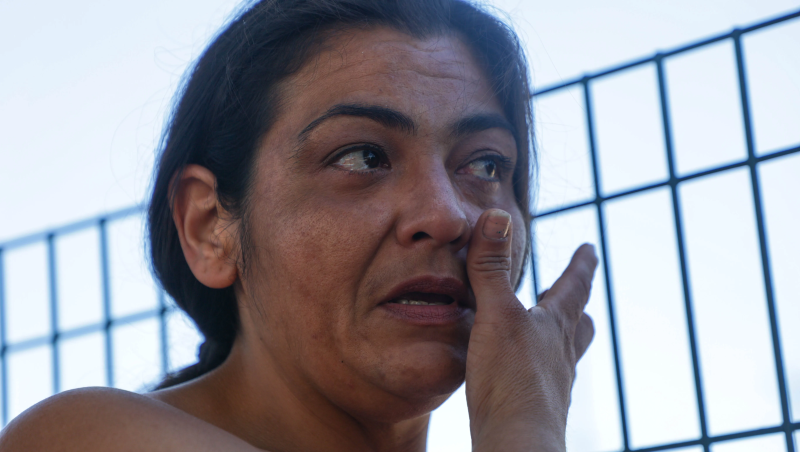
Bass says she understands participants' frustration but argued Inside Safe hasn't "really ramped up yet."
Bass told USA TODAY she is driven to make progress getting people off the streets as quickly as possible and said the social services piece of Inside Safe is still coming together.
"The one thing I did not want to do coming into office, I didn't want to sit around and say, 'We're going to develop the best program and then we're going to launch it,'" Bass said. "We just jumped into saving people from the street. And we have encountered a ton of issues along the way. And I'm going to keep doing it."
Meanwhile, the clearing of tent encampments has given housed Los Angeles residents a new sense of hope that the unsheltered homelessness crisis in their neighborhoods can be solved, Bass said.
"What people have been saying is, if you live, work, drive by or go to school by encampments, you've seen them decrease, you've seen them disappear," Bass said. "One of the most important things from Inside Safe is that we feel confident we can get people off the street. People will leave."
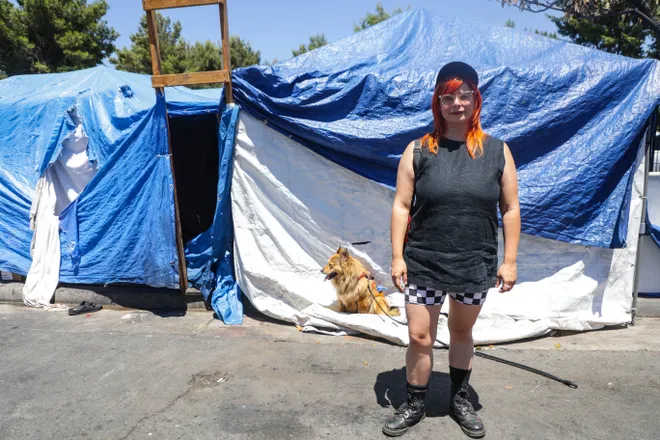
A closer look at LA's plan:LA working to end homelessness and clear tent cities
How many LA residents have been housed?
In 2023, there are an estimated 75,500 people experiencing homelessness in Los Angeles County, according to the Los Angeles Homeless Services Authority. In the city of Los Angeles, there are an estimated 46,000 unhoused residents, LAHSA says.
Bass' office says over 14,000 interim shelter beds, housing vouchers and permanent housing placements have been given out this year. But that doesn't necessarily mean 14,000 individuals have been helped because one individual could have accessed more than one social service.
Only an estimated 1,543 people have secured housing using a voucher − the best-case scenario for someone who enters Inside Safe − according to the mayor's office.
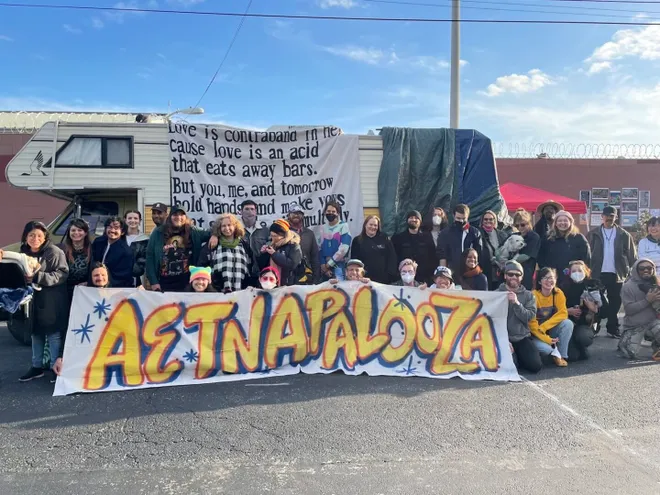
Critics say program is part of broader criminalization of homelessness
When people who live in the streets of Los Angeles are approached by outreach and sanitation workers, they are told their tents and most of their belongings must go into dumpsters before they can get in a van headed to an unnamed hotel site. If they refuse to go to a hotel, they could be charged under one of Los Angeles County's patchwork of laws banning living on the street.
Some unhoused people say the process makes them feel "coerced," Orendorff said.
She said she has been arrested twice for trying to help disabled, unhoused people clear their belongings during sweeps of encampments, which she said happen weekly in some parts of Los Angeles.
“The bottom line is clearing tents away,” especially the biggest “eyesores," for the benefit of housed residents and business owners who loudly complain about the growing problem, Orendorff, 35, said.
Inside Safe is ultimately about "improving our neighborhoods for those that are housed and those that are unhoused by allowing our unhoused neighbors to come inside," Klasky-Gamer said.
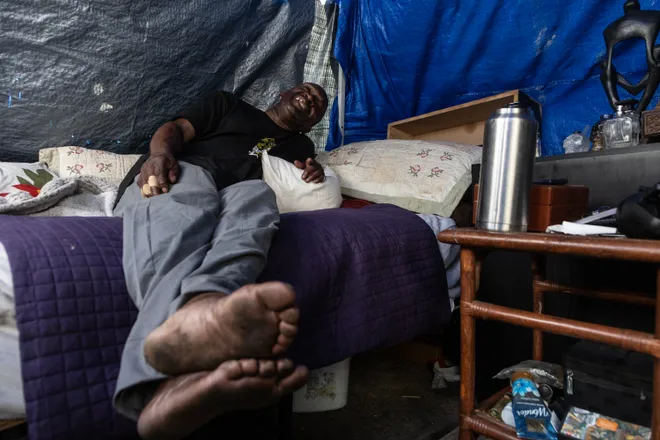
'Something very broken':Most homeless LGBTQ youths were driven to the streets by family rejection
Raleigh, Denver struggle with unsheltered homeless crisis
In North Carolina's Wake County, home to the state's capital, Raleigh, unsheltered homelessness also makes up an enormous majority of the unhoused population: 75%. Tent encampments have popped up on land lining highways, but the problem is nowhere near the crisis in Los Angeles: In Wake County, a total of 1,500 people experienced homelessness in 2022, according to the U.S. Department of Housing and Urban Development.
To connect unsheltered people to social services, Raleigh relies on Oak City Cares, a drop-in center where people can shower, do laundry and have their mail delivered. But lots of people who access the center's services remain homeless, living in a nearby men's shelter or a tent encampment across the street, Mayor Mary-Ann Baldwin told USA TODAY.
Baldwin's administration is also working to keep people housed, she said. In 2022, Wake County began a fund to purchase low-rent properties where low-income people live that may otherwise "fall into the hands of a market rate private developer and create displacement," the mayor's office said. The county has made one big purchase so far, buying a 63-unit apartment building, the mayor said.
Raleigh is also trying to get people from encampments to hotels, but at a much smaller and more gradual pace than Los Angeles. Baldwin said her administration and the county government are working to acquire two hotels and outfit the rooms with kitchenettes, that way they can be considered permanent housing and not temporary shelter. If the plan works, people could use government housing vouchers and rent the units, but the plan doesn't have a clear timeline yet, Baldwin said.
In the city of Denver, where roughly 1,300 city residents lived on the streets in 2022, Mayor Mike Johnston declared a weeklong state of emergency his first day in office in July, aimed at getting 1,000 people housed.
Calling homelessness in Denver a "humanitarian crisis," Johnston said "it’s clear that the incremental approach that we’ve taken isn’t getting people housed at scale."
Some feel safer indoors in LA hotels
Los Angeles residents experiencing homelessness who participated in Inside Safe in 2023 told USA TODAY being physically indoors made them feel safer and improved some aspects of their mental health.
After living outdoors in a tent in Los Angeles for four years, Jeffrey Tropp now experiences symptoms of post-traumatic stress disorder. During their time camping underneath a bridge popular with unhoused people, some men behaved in sexually inappropriate ways, were high on drugs or had weapons like knives, Tropp said.
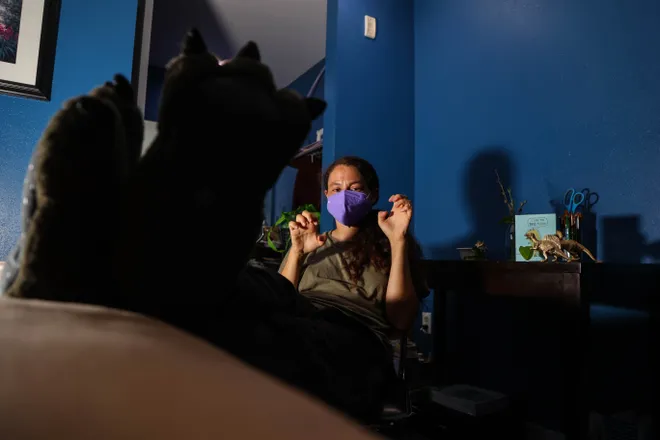
Now, Tropp says they feel more protected from those dangers inside a motel in Venice, California, where they have lived since late January alongside about 100 other unhoused residents.
"It's a little better to be indoors and not have to deal with the elements," Tropp, 30, said. "Mentally, it is better to be housed."
The Urban Institute found in its latest data on homelessness in Los Angeles that among an estimated 14,000 unhoused cisgender women and transgender people, most were unsheltered and more than half said feeling unsafe was a top concern.
"The data collected show that high rates of victimization and experiences of trauma are both acause of homelessness and a common feature of women’s experiences of homelessness," says the group's latest Los Angeles County Women's Needs Assessment, a report based on interviews with people experiencing homelessness.
Tropp says they have experienced many problems with Inside Safe. They can't eat most of the food provided inside the Venice motel because of dietary restrictions and they've lost access to a psychological therapy program they say was only available to people who are not already participating in Inside Safe.
"It's been a nightmare, a lot of us are eating a starvation diet, we're undereating," Tropp said. "We are not getting wraparound services, we're not getting mental health care," and some people with disabilities aren't able to safely use the toilets and showers in their hotel rooms.
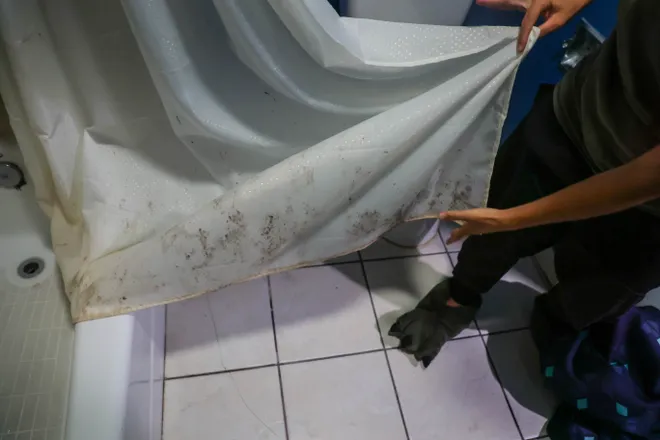
1 in 6 people left or 'exited' from LA's Inside Safe
As of this summer, one in six Inside Safe participants have left or been "exited" from the program, the Los Angeles Homeless Services Authority told USA TODAY.
Inside Safe participants and advocates who spoke with USA TODAY used a different word: Evicted.
"In the last couple of months I have seen unhoused neighbors who were previously in the program back in the neighborhood without shelter," said Jamie Feiler, an organizer with Fairfax Mutual Aid in Los Angeles.
Will Sens, another leader among Los Angeles' housing advocates, said he knows at least six people who have been exited from the program. He attributed the pattern of people cycling through Inside Safe to a lack of social services inside the hotels.
"There’s this pervading attitude of treating people like they don’t have feelings," he said. "They treat you the same way they treat you on the streets."
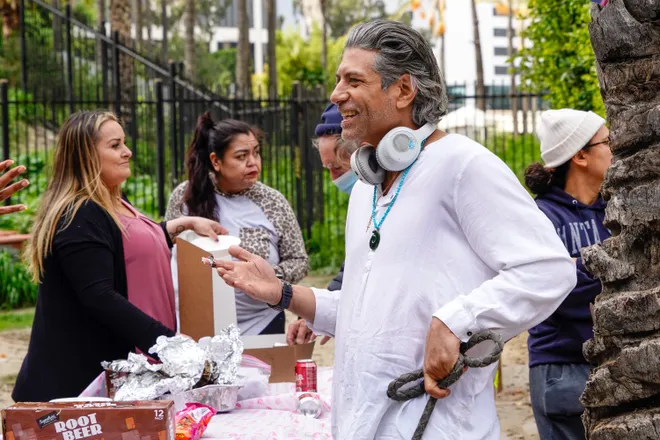
Inside Safe participants could be getting exited from the program for a variety of reasons, Klasky-Gamer said, such as if someone does something illegal at a hotel.
"Non-participation in services" could also get someone exited, she said.
"This is a service model and the premise is we are working on an exit strategy," she said, referring to getting someone into permanent housing.
Interim shelter participants say they want to be tenants
Because Inside Safe participants have no rights to the hotel rooms they are granted access to, they can be kicked out of their housing or placed at a different site for any reason, participants said. So some self-dubbed Inside Safe "tenants" have organized and asked Bass for housing contracts.
Inside the 19 Inside Safe hotels and motels scattered across Los Angeles, people say they feel like they are languishing waiting for help they don't know how to access, Orendorff said.
“People feel like they’re in waiting rooms right now, and they’ve been dumped into motels without a plan," she said.
Sens said Inside Safe participants are also "fairly often" shuffled around from hotel to hotel, for reasons that remain unclear.
"I've certainly known that we have had a couple of motels that turned out to be problematic, and we had to move everybody," Bass said.
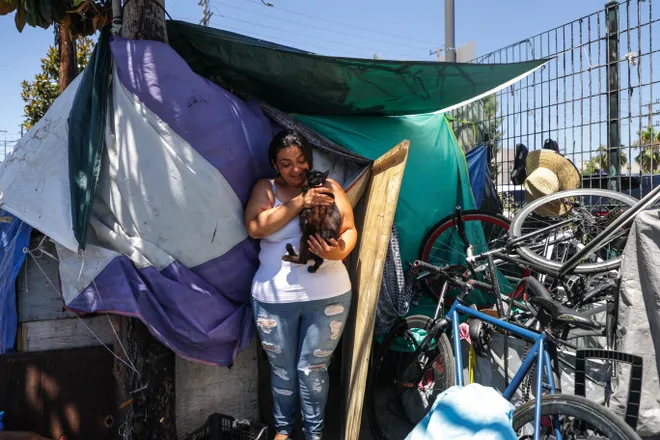
Rebecca Chavez, another organizer with Aetna Street Solidarity, went through Los Angeles' Project Room Key hotel shelter program, the precursor to Inside Safe. Through the program she secured permanent, affordable housing offered through LA Family Housing. But she was evicted from her Panorama City apartment after one year because she couldn't pay rent.
Now, Chavez, 40, is living with her husband in a tent on Aetna Street and fighting for unhoused people entering Los Angeles' temporary shelter programs to get "everything in writing" from the mayor saying what hotel room they can occupy, how long they can stay and what items they can possess.
"For us, this is a very clear, easy and achievable goal that we hope the mayor will honor," said Orendorff, who helped organize a list of demands Aetna Street Solidarity has for Bass.
The stance from service providers is clear: "The people enrolled in that program are participants of a homeless delivery program. They're not tenants, they don't have tenant rights," Klaskey-Gamer said.
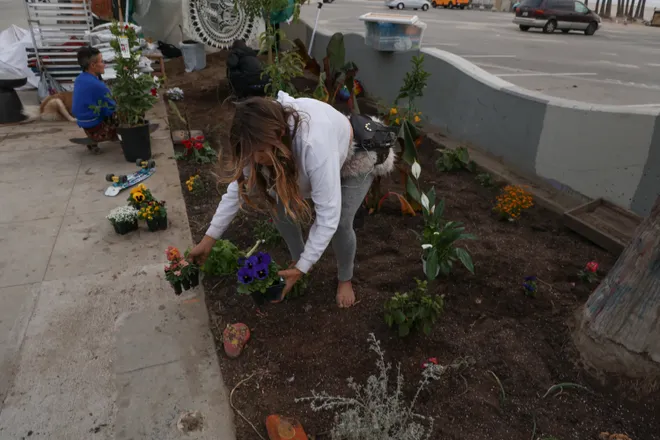
People are not 'going to be there long enough to have a lease'
Bass called Inside Safe participants "tenants" but said she does not want to give them housing contracts.
"I think people absolutely have to have rights," Bass said. "But I don't want to concede that people are going be there long enough to have a lease."
Sens said he wants the mayor to "ensure these interim sites stay open until everyone in them gets a voucher or permanent housing." When Sens participated in Project Room Key, at least one hotel location was shut down after private developers bought it out.
“The system begins and ends on the pretense of it’s all temporary," Orendorff said. "What it does to the psyche and what it does to the soul − it’s kind of an intangible thing that’s really hard to talk about. People die."
Contributing: Yannick Peterhans, USA TODAY
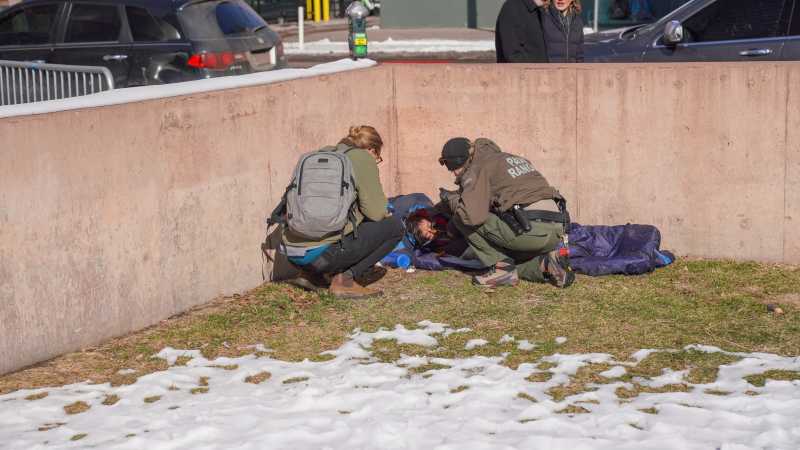
Disclaimer: The copyright of this article belongs to the original author. Reposting this article is solely for the purpose of information dissemination and does not constitute any investment advice. If there is any infringement, please contact us immediately. We will make corrections or deletions as necessary. Thank you.




